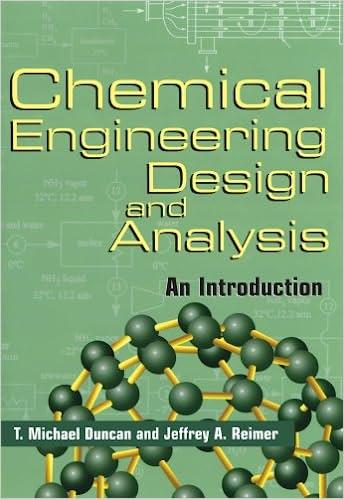Answered step by step
Verified Expert Solution
Question
1 Approved Answer
A sophomore chemical engineering student has just been introduced to the concept of mass transfer coefficient. Mass transfer coefficient is an empirical parameter often used
A sophomore chemical engineering student has just been introduced to the concept of mass transfer coefficient. Mass transfer coefficient is an empirical parameter often used in mass transfer analysis when mass transfer occurs between a solid surface and a flowing fluid past it Based on this, he speculates that a relation of the form shown below must exist for chemical reactants flowing through a porous catalyst pores:
where mass transfer coefficient of component
average velocity of the reacting fluid
molar concentration active species,
Diffusion coefficient,
diameter of catalyst pore,
viscosity of reacting,
density of reacting fluid,
Use dimensionless analysis method to obtain the form of the relationship between the fundamental variables if such a relationship exists

Step by Step Solution
There are 3 Steps involved in it
Step: 1

Get Instant Access to Expert-Tailored Solutions
See step-by-step solutions with expert insights and AI powered tools for academic success
Step: 2

Step: 3

Ace Your Homework with AI
Get the answers you need in no time with our AI-driven, step-by-step assistance
Get Started


